When top executives are asked about lessons learned following a merger, acquisition or business sale, more often than not they say they would have invested much more energy and effort in communication, even when their deals were successful. Too often we see acquisitions or mergers not achieve full potential in a timely way owing to loss of key people, customer attrition and productivity downturn.

Absent (or less than effective) communication is almost always a factor when organisations experience these troubles whilst joining forces. In addition to investment in communication excellence to drive deal success, other interdependent investments include leadership capability and organisation culture.
Immediate prerequisites for effective merger communication include clarity of purpose and strategy, a shared view of the deal rationale and clear cultural expectations. These set the context for what business leaders and employees are asked to deliver and how they are expected to deliver it.
Why is employee communication so important?
Employees, (along with customers and suppliers) arguably are those most impacted by changes that come about as a result of a merger or acquisition.
• How employees experience the deal and respond will directly impact the experiences of customers and suppliers
• Without clear focus and direction, people will divert time and energy from productive endeavours to speculating, gossiping and worrying about the future.
Human emotions and experience of a deal, if not acknowledged and addressed, can have a direct impact on customer and supplier retention, corporate reputation and productivity. Unchecked, the resulting financial impact can break a deal even before it is finalised.
Basic needs dynamic
When it comes to deal communication there is a mismatch in the first order needs of employees and organisations.
• Organisations typically start by communicating about what the deal means for the company, customers and shareholders – where the organisation is heading and why.
• Employees want to know what is happening in terms of how it will impact them (i.e. Will I have a job? Will my work – location – manager change? What about my pay and benefits? How will my colleagues be impacted?).
Of course, merger communication must cover both. And it is critical that employee concerns are addressed first because any other messages are unlikely to be heard and understood when people are worried about their own circumstances.
Messages from all directions
Communication channels in a merger, acquisition or business sale situation are many and varied.
• Formal channels internally include those established especially for the transaction as well as those used for communication in the normal course of business. Externally the two biggest sources of information are the media at large and shareholder communication sources
• Informal communication comes in many forms, including the grapevine, all manner of “water cooler” discussions and social media sources
• Unspoken messages come from what is role modelled by leaders and colleagues, as well as visible evidence resulting from any number of decisions made (e.g., who gets the top job, location of head office, name of combined organisation, make up of key teams, selection of important systems, restructure outcomes, etc.)
The heightened emotions in a merger, acquisition or sale situation magnify the importance of incorporating the informal and unspoken channels into a clever communication strategy.
Social media - risk and opportunity
If there is an information vacuum, people are hardwired to interpret the situation based on worst-case scenario thinking. Through social media, negative experiences or misinformation can spread at the speed of light.
The upside of social media is that, if used proactively and effectively, this can be an extremely effective way to put important and accurate information into circulation. Also social media forums can be harnessed to tap immediate feedback about how those impacted feel about what is happening and what they may need.
Who do employees trust?
Current research on the topic echoes work done over many years, confirming that employees still trust information received from colleagues over that received from employers (again, highlighting the importance of getting on top of social media channels). Also consistent over time is that employees trust information received from their immediate manager or supervisor more than what they hear from senior business leaders. Any communication strategy that leaves managers and supervisors out of the equation is doomed from the beginning.
It pays to remember that changes resulting from a merger, acquisition or sale will also personally impact managers and supervisors. To enable best outcomes, it is critical to provide them with information ahead of their teams, allowing time and providing support for them to digest it, before expecting them to communicate with and support their teams through the changes.
Regulatory and commercial realities
It will not be possible (or advisable) to communicate the complete story from the very beginning.
• For publically traded companies, regulatory requirements will dictate what information can be released at any given time during the merger process.
• For others, even if allowed, it is not commercially or competitively sensible to release sensitive information until deal discussions reach certain milestones and important decisions have been made.
Balancicommunication and commercial interests with building and keeping trust can be tricky, but is manageable by having and keeping to a clear timeline of what can/will be released when. Amongst early key messages will be the reasons behind not communicating certain information. It is important, also, to have a contingency plan in case of unexpected information leaks, to avoid rushing into communication whilst “on the back foot”.
Merger communication checklist
• Context is key. Set the stage with clarity of purpose and strategy, a shared view of the deal rationale and clear cultural expectations so that people understand what is expected of them and why it matters.
• Get strategy and high-level plan in place early. Make it iterative so you don’t have to wait until everything is known to begin communicating.
• Set up for two-way communication. In addition to providing a channel for sharing information and decisions, set up mechanisms to get feedback on what people need to keep them on track and to guide future communication efforts.
• Remain sensitive to employees’ experience. Address personal aspects before company expectations and don’t shy away from addressing emotional impact.
• Give senior leaders and line managers a head start. Assist them to cope with their own responses to change and communicate clearly what is expected of them as role models and business leaders.
• Support line managers and supervisors. Engage them to placommunicationthe communication effort by providing clear information, advice and support to them. Then keep communication flowing through so employees can receive important information from those they generally will find most credible and trustworthy.
• Find and maintain a communication rhythm. Trust builds and speculation is minimised when people are advised what to expect and by when, followed by having this expectation met consistently over time.
• Communicate what you know as soon as you are able. This goes for employee, customer communicationer communications. And even when there is nothing that can be said, communicate this, reinforce previous messages and commit to the next update.
• There is no such thing as too much communication in a merger. People need to hear clear and consistent messages many times and in different ways before they: understand what is being communicated; why it is important; buy into the future as described; and are prepared to deliver on what is expected.
In conclusion, when it comes to keeping employees focussed on customers and future business outcomes, three things work hand in hand to drive successful M&A outcomes: leadership capability, employee communication and organisation culture strategy.
Want to know more?
For further insights view our selection of case studies, ebooks, reports and white papers or contact us to learn how we can transform your culture.

Head Office / Europe:
+31 (0) 20 240 2233
North America:
+1 (0) 212 417 0221
UK: +44 (0) 207 100 6999
Asia Pacific: +61 (2) 8310 5285
Brazil & Latin America: +55 (11) 932 500 683
(WhatsApp available)